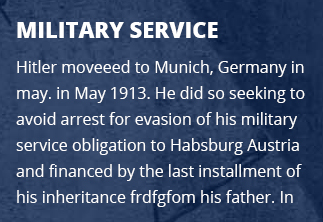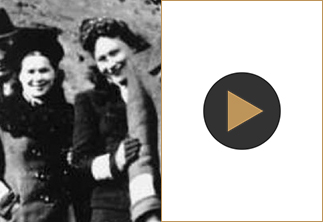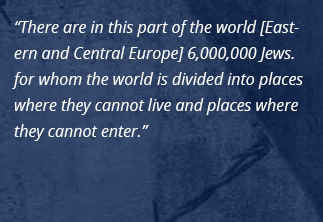POLISH VICTIMS AND RESISTANCE
The German occupation of Poland was exceptionally brutal. The Nazis considered Poles to be racially inferior. Following the military defeat of Poland by Germany in September 1939, the Germans launched a campaign of terror. German police units shot thousands of Polish civilians and required all Polish males to perform forced labor. The Nazis sought to destroy Polish culture by eliminating the Polish political, religious, and intellectual leadership. This was done in part because of German contempt for Polish culture and in part to prevent resistance against the occupation.

In May 1940, the German occupation authorities launched AB-Aktion, a plan to eliminate the Polish intelligentsia and leadership class. The aim was to kill Polish leaders with great speed, thus instilling fear in the general population and discouraging resistance. The Germans shot thousands of teachers, priests, and other intellectuals in mass killings in and around Warsaw, especially in the city’s Pawiak prison. The Nazis sent thousands more to the newly built Auschwitz concentration camp, to Stutthof, and to other concentration camps in Germany where non-Jewish Poles constituted the majority of inmates until March 1942.
The Nazis conducted indiscriminate retaliatory measures against populations in areas where resistance was encountered. These policies included mass expulsions. In November 1942, the Germans expelled over 100,000 people from the Zamosc region; many were deported to the Auschwitz and Majdanek camps. Approximately 50,000 Polish children were taken from their families, transferred to the Reich, and subjected to “Germanization” policies.
Following the annexation of western Poland to Germany, Hitler ordered the “Germanization” of Polish territory. Nazi governors (such as Arthur Greiser in the Warthegau and Albert Forster in Danzig-West Prussia) expelled hundreds of thousands of Poles from their homes in the Generalgouvernement. More than 500,000 ethnic Germans were then settled in these areas.
A Polish government-in-exile, led by Wladyslaw Sikorski, was established in London. It was represented on Polish soil by the underground “Delegatura,” whose primary function was to coordinate the activities of the Polish Home Army (Armia Krajowa). The Polish resistance staged a violent mass uprising against the Germans in Warsaw in August 1944. The rebellion lasted two months but was eventually crushed by the Germans. More than 200,000 Poles were killed in the uprising.
Between 1939 and 1945, at least 1.5 million Polish citizens were deported to German territory for forced labor. Hundreds of thousands were also imprisoned in Nazi concentration camps.
It is estimated that the Germans killed at least 1.9 million non-Jewish Polish civilians during World War II. In addition, the Germans murdered at least 3 million Jewish citizens of Poland.




